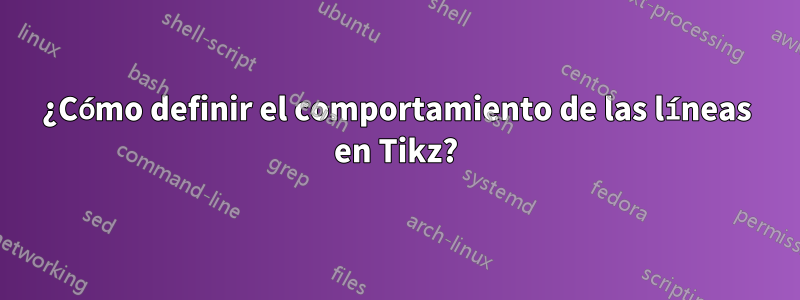
Tengo el siguiente código LaTex:
% !TEX TS-program = pdflatex
% !TEX encoding = UTF-8 Unicode
\documentclass[14pt, a4paper]{article} % use larger type; default would be 10pt
\usepackage[utf8]{inputenc}
\usepackage[russian]{babel}
\usepackage{listings}
\usepackage{tikz}
\usetikzlibrary{shapes.geometric, arrows}
\usetikzlibrary{shapes.multipart}
\oddsidemargin=-15.4mm
\textwidth=190mm
\headheight=-32.4mm
\textheight=277mm
\tolerance=100
\parindent=0pt
\parskip=8pt
\pagestyle{empty}
\tikzstyle{startstop} = [rectangle, rounded corners, minimum width=3cm, minimum height=1cm,text centered, draw=black, fill=blue!50]
\tikzstyle{io} = [trapezium, trapezium left angle=70, trapezium right angle=110, minimum width=3cm, minimum height=1cm, text centered, draw=black, fill=red!50]
\tikzstyle{process} = [rectangle, minimum width=3cm, minimum height=1cm, text centered, draw=black, fill=gray!50]
\tikzstyle{decision} = [diamond, minimum width=3cm, minimum height=1cm, text centered, draw=black, fill=green!50]
\tikzstyle{loop} = [rectangle split, rectangle split parts=2,draw, minimum width=3cm, minimum height=1cm, text centered, draw=black, fill=gray!50]
\tikzstyle{arrow} = [thick,->,>=stealth]
\begin{document}
{\textbf{Задача 1.}}
\\
Схема алгоритма:
\\
\begin{center}
\begin{tikzpicture}[node distance=2cm]
\node (start) [startstop] {Начало};
\node (input) [io, below of=start] {Ввод n};
\node (ds1) [decision, below of=input, yshift=-0.4cm]{n = 0?};
\node (y-case) [process, right of=ds1, xshift=2cm]{pow = 1};
\node (while) [loop, below of=ds1, yshift=-0.4cm]{
\nodepart{one} While n > 0
\nodepart{two}
\begin{tabular}{cc}
n = n //10 \\
pow = pow +1 \\
\end{tabular}
};
\node (output) [io, below of=while, ]{Вывод pow};
\node (stop) [startstop, below of=output] {Конец программы};
\draw[arrow] (start) -- (input);
\draw[arrow] (input) -- (ds1);
\draw[arrow] (ds1) -- node[anchor=south]{Yes}(y-case);
\draw[arrow] (y-case) |- (while);
\draw[arrow] (ds1) -- node[anchor=east]{No}(while);
\draw[arrow] (while) -- (output);
\draw[arrow] (output) -- (stop);
\end{tikzpicture}
\end{center}
\end{document}
¿Cómo puedo definir el comportamiento de la flecha "NO" para que vaya desde la esquina izquierda del bloque de diamantes (ahora va desde la esquina inferior)?
Respuesta1
¿Como esto?
\documentclass[12pt, a4paper]{article}
\usepackage[russian]{babel}
\usepackage{listings}
\usepackage{tikz}
\usetikzlibrary{arrows.meta,
chains, % new
positioning, % new
quotes, % new
shapes.geometric,
shapes.multipart,
babel
}
\oddsidemargin=-15.4mm % for this settings is better to use >"geometry" package
\textwidth=190mm
\headheight=-32.4mm
\textheight=277mm
\tolerance=100
\parindent=0pt
\parskip=8pt
\pagestyle{empty}
\makeatletter
\tikzset{FlowChart/.style={ % <--- corrected, new
base/.style = {draw,
minimum width=3cm, minimum height=1cm, align=center,
outer sep=0pt},
startstop/.style = {base, rounded corners, fill=blue!30},
process/.style = {base, fill=orange!30},
decision/.style = {base, diamond, aspect=1.3, fill=green!30},
io/.style = {base, trapezium, trapezium stretches body,
trapezium left angle=70, trapezium right angle=110,
fill=red!30,
text width =\pgfkeysvalueof{/pgf/minimum width} - 2*\pgfkeysvalueof{/pgf/inner xsep}
},
loop/.style = {base, rectangle split, rectangle split parts=2,
fill=gray!50},
arrow/.style = {thick,-Triangle},
% suspend
suspend join/.code={\def\tikz@after@path{}}
}
}% end of tikzset
\makeatother
\begin{document}
\textbf{Задача 1.} \\
Схема алгоритма: \\
\begin{center}
\begin{tikzpicture}[FlowChart,
base/.append style = {on chain, join=by arrow},
node distance = 5mm and 7mm,
start chain = A going below
]
% nodes in chain
\node (start) [startstop] {Начало};
\node (input) [io] {Ввод n};
\node (ds1) [decision] {n = 0?};
\node (while) [loop,
suspend join] {\nodepart{one} While n > 0
\nodepart{two} \begin{tabular}{cc}
n = n //10 \\
pow = pow +1 \\
\end{tabular}
};
\node (output) [io] {Вывод pow};
\node (stop) [startstop] {Конец программы};
% right branch
\node (y-case) [process,right=of ds1,
suspend join] {pow = 1};
%
\draw[arrow] (ds1) to ["Yes"] (y-case);
\draw[arrow] (y-case) |- (while);
\draw[arrow] (ds1.west) to ["No" '] ++ (-1,0) |- (while); % new
\end{tikzpicture}
\end{center}
\end{document}
Nota: En comparación con el suyo, los MWE anteriores cambiaron lo siguiente:
- para los elementos de imagen se utilizan estilos
tikseten lugar de obsoletostikzstyle - Para el posicionamiento de nodos se utiliza la sintaxis definida en
positioningla biblioteca (observarright=of ds1en lugar deright of=ds1) - Los nodos están organizados en cadena, lo que simplifica el código y lo hace más corto y claro.
- Las líneas de conexión verticales se dibujan mediante
joinuna macro definida en lachainsmacro. joinLa línea entre el último nodo en la rama principal y el nodo derecho del nodo de decisión está interrumpida por el código de estilo.suspend join




